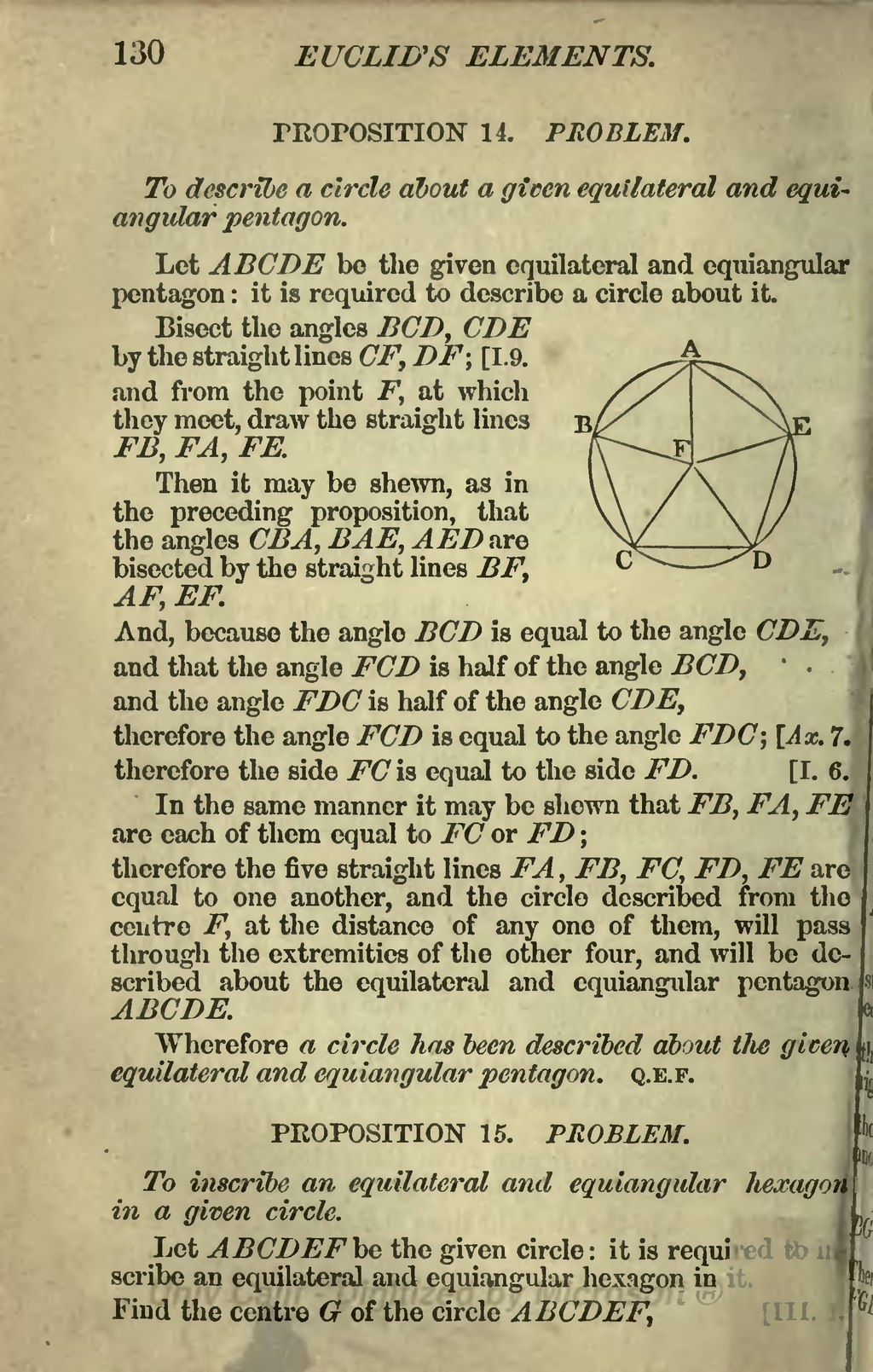PROPOSITION 14. PROBLEM
To describe a circle about a given equilateral and equiangular pentagon.
Let ABCDE be the given equilateral and equiangular pentagon: it is required to describe a circle about it.
 Bisect the angles BCD, CDE by the straight lines CF, DF; [1.9. and from the point F, at which they meet, draw the straight lines FB, FA, FE.
Bisect the angles BCD, CDE by the straight lines CF, DF; [1.9. and from the point F, at which they meet, draw the straight lines FB, FA, FE.
Then it may be shewn, as in the preceding proposition, that the angles CBA, BAE, AED are bisected by the straight lines BF, AF, EF.
And, because the angle BCD is equal to the angle CDE, and that the angle FCD is half of the angle BCD,
and the angle FDC is half of the angle CDE,
therefore the angle FCD is equal to the angle FDC, [Ax. 7.
therefore the side FC is equal to the side FD. [I. 6.
In the same manner it may be shewn that FB, FA, FE are each of them equal to FC or FD;
therefore the five straight lines FA, FB, FC, FD, FE are equal to one another, and the circle described from the centre F, at the distance of any one of them, will pass through the extremities of the other four, and will bo described about the equilateral and equiangular pentagon ABCDE.
Wherefore a circle has been described about the given equilateral and equiangular pentagon. q.e.f.
PROPOSITION 15. PROBLEM.
To inscribe an equilateral and equiangular hexagon in a given circle
Let ABCDEF be the given circle: it is requirerd to inscribe an equilateral and equiangular hexagon in it.
Find the centre G of the circle ABCDEF,
